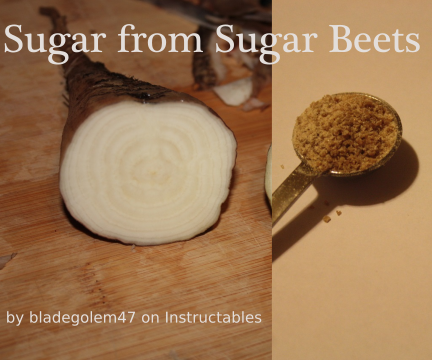How to decide between sugar beet vs sugar cane for climate-specific cultivation success
Unboxing Sugar Beet Vs Sugar Cane: Essential Information on Their Uses and Effect On the Sugar Market
The distinction between sugar beet and sugar cane plays an essential function in the global sugar market. Each plant has distinct farming techniques and geographic preferences. Their handling approaches vary considerably, influencing nutritional profiles and economic implications. Additionally, environmental sustainability is becoming significantly pertinent in customer options. Understanding these variables can illuminate the intricacies of the sugar sector and its future instructions. What remains to be explored are the moving trends that can improve this landscape.
Review of Sugar Beet and Sugar Cane
Sugar beet and sugar cane are 2 primary resources of sucrose, each cultivated in distinctive environments and having special qualities. Sugar beet, an origin vegetable, flourishes in pleasant environments, primarily in Europe and The United States And Canada. It is commonly gathered in the loss and undertakes processing to remove sugar from its high sucrose material. On the other hand, sugar cane is a tropical lawn that grows in warmer areas, such as Brazil and India. Its high stalks are gathered year-round, offering a continual supply of sugar.The sucrose drawn out from sugar cane is frequently regarded as having a more intricate flavor profile contrasted to that from sugar beet. Both resources contribute significantly to the worldwide sugar market, affecting rates and schedule. Consequently, recognizing their distinctions is necessary for stakeholders in agriculture, food manufacturing, and economics, as these crops play a pivotal function in food systems worldwide.
Growing Practices and Geographic Circulation
Although both sugar beet and sugar cane are vital sources of sucrose, their cultivation practices and geographic distribution vary substantially. Sugar beet flourishes in warm environments, particularly in Europe and North America, where its cooler growing seasons improve root advancement. Farmers often practice crop rotation and make use of sophisticated agricultural technologies to optimize returns, preferring well-drained, abundant soils.In comparison, sugar cane embellishments in exotic and subtropical regions, with Brazil, India, and China being the leading producers. Its farming needs warmer temperatures and enough rainfall, making irrigation necessary in drier areas. Sugar cane is typically expanded in monoculture systems, which can result in soil depletion if not managed sustainably. In addition, harvesting practices vary; sugar cane is usually reduced by hand or maker, while sugar beet is frequently gathered using specialized equipment. These geographical and growing variations significantly impact the global sugar market and regional economies.
Processing Methods and Production Methods
The processing approaches and manufacturing techniques for sugar beet and sugar cane emphasize substantial differences that influence the last product's quality and characteristics. Sugar beetroots go through a straightforward procedure, where they are harvested, washed, and cut into thin chips prior to undergoing hot water extraction to liquify the sugar. The resulting juice is after that clarified, evaporated, and taken shape to generate granulated sugar.Conversely, sugar cane processing includes crushing the stalks to remove juice, followed by a collection of heating and boiling actions. This method includes the elimination of pollutants and more evaporation, bring about formation. Additionally, sugar cane handling typically emphasizes the production of molasses and bagasse, which can be made use of for energy or various other products.These varied techniques mirror not only the distinctions in the source products but likewise their effects for performance, sustainability, and final sugar features on the market.
Nutritional Profiles and Wellness Implications
An evaluation of the nutritional profiles of sugar beet and sugar cane discloses distinct differences in their nutrient structure. Each resource offers special wellness advantages that can affect nutritional options. Comprehending these variations is important for making notified choices concerning sugar intake and total wellness.

Nutrient Make-up Comparison
Nutritional profiles of sugar beet and sugar cane reveal distinct distinctions that can influence health and wellness end results. Sugar beets have higher levels of necessary nutrients such as fiber, potassium, and magnesium, which add to digestion wellness and cardio feature. In comparison, sugar cane largely supplies sucrose, with marginal dietary worth beyond energy arrangement. The fiber material in sugar beetroots help in managing blood sugar levels, while sugar cane lacks this benefit. Furthermore, sugar beetroots have a reduced glycemic index contrasted to sugar cane, which might be advantageous for individuals handling blood sugar level. These variants in nutrient structure highlight the significance of considering the resource of sugar, specifically for those conscious of their dietary choices and overall well-being.
Health Advantages Summary
Health and wellness advantages stemmed from sugar beet and sugar cane usage vary considerably as a result of their varying nutritional profiles. Sugar beetroots are rich in important nutrients, consisting of nutritional fiber, vitamins, and minerals, especially folate and potassium. This composition can sustain digestive system health and wellness, enhance cardiovascular feature, and help in blood sugar level law. On the other hand, sugar cane mostly provides a source of carbs and power, with less vitamins and minerals. It consists of antioxidants, which may aid deal with oxidative stress and inflammation. The wellness ramifications of consuming these sugars likewise depend on their types-- entire foods versus refined sugars-- influencing total benefits. Inevitably, moderation is essential, as too much consumption of either can result in wellness issues, underscoring the importance of balanced usage
Economic Effect On Neighborhood and Worldwide Markets
Although both sugar beet and sugar cane function as important resources of sugar, their economic effect on local and international markets differ substantially. Sugar cane largely thrives in exotic environments, making it a staple in countries like Brazil and India, where the farming infrastructure is heavily tailored towards massive haciendas. This adds to considerable export revenues and employment chances in these regions. Conversely, sugar beet is typically grown in pleasant areas, specifically in Europe and The United States And Canada, where its production sustains neighborhood economic climates with smaller-scale farming and processing industries.The worldwide sugar market is influenced by tariffs, trade contracts, and aids, which can favor one sort of sugar over the other. Fluctuations in prices also affect both regional farmers and international markets, leading to varying financial stability in regions depending on sugar manufacturing. Subsequently, the financial landscape formed by sugar beet and sugar cane is complex and multifaceted, reflecting more comprehensive farming patterns.
Environmental Considerations and Sustainability
The ecological considerations bordering sugar beet and sugar cane manufacturing highlight considerable differences in land use, water intake, and carbon impacts. Recognizing these aspects is necessary for examining the sustainability of each plant. The effects of farming methods on ecosystems and sources should be carefully analyzed to educate future agricultural decisions.
Land Usage Impacts
When evaluating the land usage impacts of sugar beet and sugar cane growing, it becomes noticeable that each crop presents distinctive environmental factors to consider and sustainability difficulties. Sugar beet, generally grown in temperate areas, typically requires substantial land conversion in areas formerly used for varied plants, potentially causing decreased biodiversity. In comparison, sugar cane is mainly grown in tropical areas, where its comprehensive land needs can result in deforestation and environment loss. Additionally, sugar cane areas might displace food crops, increasing concerns regarding food security. Both plants add to soil destruction through monoculture methods, demanding sustainable farming methods. Eventually, the land usage effects of both sugar beet and sugar cane growing emphasize the need for balance between economic feasibility and ecological stewardship.
Water Intake Distinctions
Water intake stands for a vital consider reviewing the sustainability of sugar beet and sugar cane manufacturing. Sugar cane typically requires considerably much more water than sugar beet, mostly because of its development conditions in tropical environments where irrigation is frequently necessary. On the other hand, sugar beet is mainly cultivated in warm areas and generally counts extra on rainfall, making it less reliant on substantial irrigation systems. This difference in water usage impacts regional water sources and can cause issues over water deficiency. Furthermore, the efficiency of water usage in sugar beet cultivation frequently results in lower overall water footprints compared to sugar cane. Understanding these differences is essential for assessing the environmental effects and sustainability of these 2 sugar resources.
Carbon Footprint Evaluation
Evaluating the carbon impact of sugar beet and sugar cane production is necessary for comprehending their overall ecological impact. Sugar beet farming usually leads to a lower carbon impact compared to sugar cane, mainly because of the reduced dependence on fossil gas for handling and transport. Additionally, sugar beet is usually expanded in temperate environments, lessening the need for comprehensive irrigation and lowering greenhouse gas discharges. On the other hand, sugar cane farming commonly includes higher power usage, especially in exotic areas, where cultivation and handling can be resource-intensive. Additionally, land-use adjustments linked with sugar cane expansion can aggravate carbon emissions. Inevitably, both crops existing distinct sustainability obstacles that must be dealt with to minimize their environmental impact in the worldwide sugar market.
Future Trends in the Sugar Market
Just how will the sugar industry progress in the coming years? Sector experts forecast a number of transformative fads forming its future. A significant shift towards sustainability is prepared for, driven by intense consumer understanding and governing pressures. This will likely result in raised investments in green manufacturing methods, benefiting both sugar beet and sugar cane growers.Additionally, technical improvements, such as accuracy farming and biotechnology, are expected to enhance look at this now crop yields and minimize resource usage. The sector may also see a rise in alternative sweeteners, as consumers progressively seek much healthier options.Moreover, the global demand for sugar is forecasted to vary, influenced by altering dietary choices and financial problems. As nations carry out stricter sugar taxes, manufacturers will need to adapt their techniques to stay competitive. Generally, the sugar market shows up poised for considerable development, highlighting sustainability and advancement in reaction to market characteristics.
Frequently Asked Questions
What Are the Key Differences in Taste Between Sugar Beet and Sugar Cane?
The major differences in taste between sugar beet and sugar cane can be refined. Sugar cane is often referred to as having a richer, extra complex taste, while sugar beet often tends to be rather milder and less aromatic.
Just How Do Sugar Beet and Sugar Cane Affect Cooking Recipes In A Different Way?
The differences between sugar beet and sugar cane in cooking dishes mainly lie in their moisture material and taste accounts - Sugar beet vs sugar cane. Sugar cane usually boosts caramelization, while sugar beet has helpful resources a tendency to yield an extra neutral sweetness
Can Sugar Beet and Sugar Cane Be Used Mutually in Cooking?
Sugar beet discover this and sugar cane can commonly be utilized mutually in cooking; nevertheless, subtle differences in taste and structure might affect the last result of recipes, depending upon the specific recipe and wanted results.

What Are the By-Products of Handling Sugar Beet and Sugar Cane?
The by-products of handling sugar beet include molasses, animal feed, and biofuels, while sugar cane handling yields bagasse, molasses, and ethanol (Sugar beet vs sugar cane). Both plants contribute substantially to numerous industries past sugar production
How Do Sugar Beet and Sugar Cane Contribute to Biofuel Production?
Sugar beet and sugar cane work as considerable resources for biofuel production. Their deposits, after sugar extraction, can be changed into bioethanol, adding to renewable resource campaigns and minimizing dependence on nonrenewable fuel sources in numerous regions.